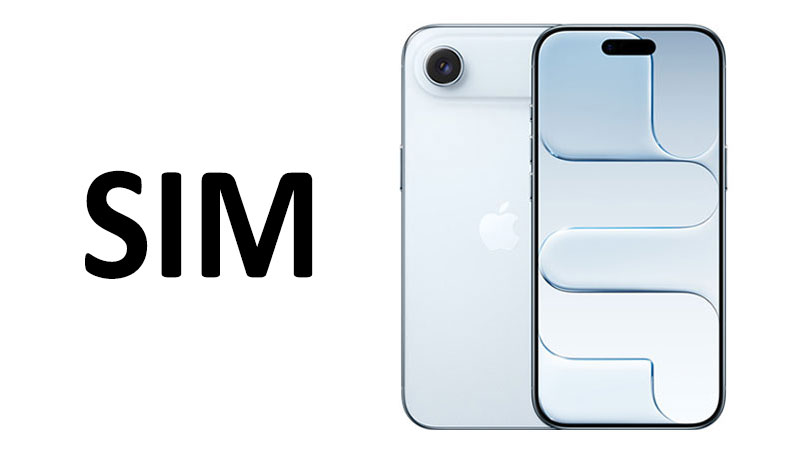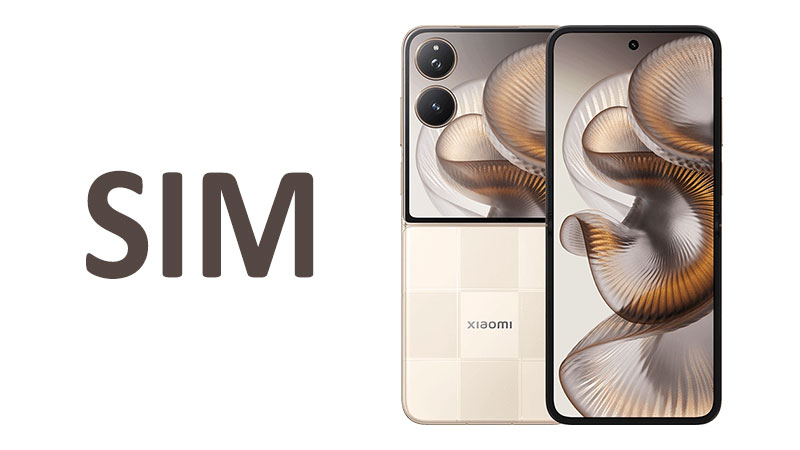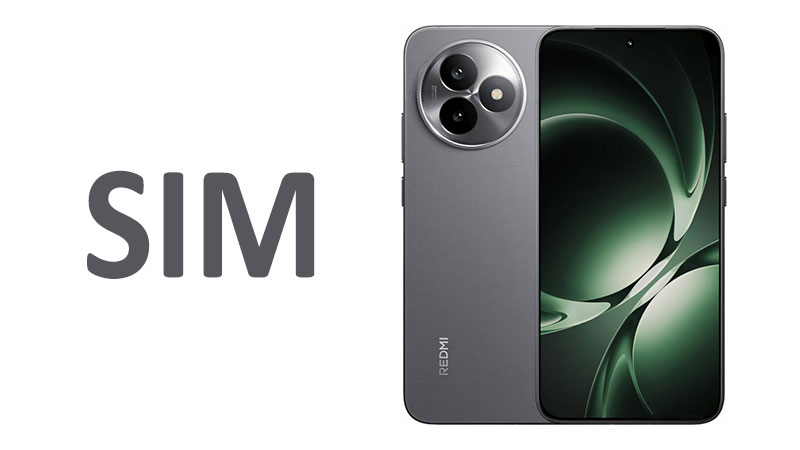The Apple iPhone Air SIM model redefines modern mobile connectivity. This device focuses intensely on advanced eSIM and Dual-SIM capability. It targets users seeking seamless global networking and high-speed data access. This in-depth article explores every layer of the phone’s communication suite. We will analyze the digital SIM architecture, comprehensive cellular bands, and next-generation wireless standards. Understanding these features is crucial for potential buyers and technology enthusiasts. The iPhone Air’s connectivity package is arguably its most transformative element.
The eSIM Revolution: Dual-SIM Architecture Explained
The Apple iPhone Air completely embraces the digital future of mobile plans. It operates exclusively using eSIM technology. This design eliminates the traditional physical SIM card slot entirely. Instead, the phone relies on Dual eSIM functionality. This setup provides unparalleled flexibility for managing multiple lines.
Dual eSIM Functionality and Storage Capacity
The iPhone Air supports two active eSIMs simultaneously. This Dual SIM capacity is a key differentiator. Users can manage separate business and personal lines easily. Furthermore, travelers can maintain their home number while adding a local data plan. The technology behind this is highly robust.
The device can store eight or more individual eSIM profiles. However, only two profiles can be actively used at any given moment. This extensive storage is extremely convenient. Users can pre-load travel plans for numerous countries. Switching between these stored profiles happens instantaneously in the settings menu. You avoid the physical hassle of swapping tiny SIM cards.
Specialized Comparison: eSIM vs. Previous Models
Earlier iPhone models offered a physical SIM plus one eSIM. The US version of the iPhone 14 and later dropped the physical slot. This transition marked a key step towards full digital dependency. The iPhone Air builds on this by allowing two active eSIMs. This feature offers pure digital Dual-SIM Dual Standby (DSDS) operation.
Competitors often still use a physical slot alongside one eSIM. The Air’s dual-eSIM approach is cleaner and more secure. It removes a potential point of entry for dust and water. Furthermore, it enhances security against SIM swapping fraud. A digital eSIM cannot be physically stolen from the phone.
Pros and Cons of an eSIM-Only Design
There are several distinct advantages to the eSIM-only design.
Pros include greater flexibility and enhanced security features. Activation is usually instant and entirely digital. This saves time and paperwork when switching carriers. It also simplifies the device’s internal design. The lack of a SIM tray allows for potentially more space for other components. This might include a larger battery or better camera sensors.
However, some disadvantages still exist in certain regions. eSIM compatibility is not yet universal across all global carriers. Users in areas with limited eSIM support may face challenges. Activating a new line can sometimes require a strong Wi-Fi connection. Troubleshooting connectivity problems can also become more complex without a physical card to test.
Important Points for iPhone Air Buyers
A prospective buyer must confirm their primary carrier supports eSIM fully. They should also verify support for Dual eSIM activation. Travelers need to check international carrier availability before relying solely on this technology. Ensure your current phone number is eligible for digital transfer. Most major carriers now support a seamless eSIM Quick Transfer process.
Comprehensive Cellular Coverage: 5G and Global Bands
The cellular connectivity of the Apple iPhone Air is exceptionally broad. It supports a full suite of modern and legacy wireless standards. This ensures compatibility across virtually every global network. The breadth of supported technologies confirms its status as a truly international device.
Leveraging the Power of 5G and LTE
The phone supports high-speed 5G connectivity. This includes both sub-6GHz and potentially mmWave bands, depending on the market. 5G offers revolutionary speeds for downloading and streaming. It also provides much lower latency for real-time applications. High-speed 5G is essential for cloud gaming and advanced augmented reality features.
For areas where 5G is still developing, robust LTE support is critical. The iPhone Air supports all necessary LTE bands globally. This ensures fast and reliable data connections even in remote locations. The device automatically switches between 5G and LTE bands efficiently. This intelligent switching capability optimizes both speed and battery life.
Legacy Network Compatibility
The iPhone Air also maintains support for older network technologies. These include GSM, CDMA, HSPA, and EVDO. GSM and HSPA are prevalent worldwide, especially for voice calls. CDMA and EVDO are still relevant for specific legacy carriers, especially in North America and Asia. Including these older technologies guarantees universal voice and text service. It prevents potential compatibility issues when traveling or using niche carriers.
Specialized Comparison: Connectivity Bands
In terms of raw supported bands, the iPhone Air maintains Apple’s high standards. It is comparable to the iPhone 15 Pro Max in global band inclusion. The key difference lies in the purely digital activation process. This allows carriers to provision specific band configurations remotely. It ensures the phone is optimally configured for its network environment. This offers a specialized advantage in speed tuning.
Competitor devices may offer similar band support but often require a physical SIM. The Air’s system streamlines the process of regional compliance. Furthermore, the robust support for all these protocols is crucial. It maximizes network availability in densely populated urban centers and rural areas. This extensive coverage suite provides significant peace of mind for the user.
Pros and Cons of Wide Cellular Support
The main pro is reliable global connectivity without compromise. Users rarely encounter “no service” zones that affect less compatible phones. This is a huge benefit for international business users.
A potential con is the increased complexity of the internal modem hardware. Supporting so many band combinations requires sophisticated chip design. This complexity can sometimes impact power efficiency slightly. However, Apple typically mitigates this with highly optimized modem software. The resulting battery drain remains minimal.
Breaking the Speed Barrier: Wi-Fi 7 and Tri-Band Networking
The Apple iPhone Air is designed to handle extreme local network speeds. The integration of Wi-Fi 7 (802.11be) technology is a massive step forward. This new standard offers vastly improved throughput, capacity, and efficiency. It is a defining feature of the phone’s connectivity profile.
Deep Dive into Wi-Fi 7 Technology
Wi-Fi 7 delivers revolutionary speed increases over previous generations. It can achieve theoretical speeds many times faster than Wi-Fi 6E. This speed comes from several major technological advancements. One key feature is the introduction of 320 MHz channel bandwidth. This doubles the channel width used by Wi-Fi 6E devices. More bandwidth means a much larger highway for data transmission.
Another crucial improvement is 4096-QAM (Quadrature Amplitude Modulation). This technology packs more data into each signal packet. It provides a 20% increase in peak data rates compared to Wi-Fi 6E’s 1024-QAM. This directly translates to faster downloads and smoother streaming.
Multi-Link Operation and Interference
Wi-Fi 7 introduces Multi-Link Operation, or MLO. MLO allows the iPhone Air to connect to different frequency bands simultaneously. It can use the 2.4 GHz, 5 GHz, and 6 GHz bands together. This capability drastically reduces latency and boosts connection reliability. If one band experiences interference, the connection shifts instantly.
The phone also benefits from Preamble Puncturing. This feature helps isolate interference on a channel. The device can then use the remaining clear portion of that channel. This maximizes the efficient use of available spectrum. Consequently, performance remains high even in congested network environments.
Tri-Band Support: 2.4, 5, and 6 GHz
The Wi-Fi 7 standard is inherently tri-band. The iPhone Air fully utilizes the 2.4 GHz, 5 GHz, and 6 GHz frequencies. The 2.4 GHz band offers superior range, passing easily through walls. The 5 GHz band provides faster speeds over shorter distances. The 6 GHz band is the clean, new spectrum that enables Wi-Fi 6E and 7 speeds. It is generally free of older device interference. Using all three bands ensures optimal performance across an entire home or office. This comprehensive approach to WLAN maximizes the user experience.
Specialized Comparison: Wi-Fi 7 vs. Wi-Fi 6E
Previous iPhones often supported Wi-Fi 6 or 6E. Wi-Fi 6E introduced the fast 6 GHz band. However, Wi-Fi 7 is a generational leap beyond 6E.
Wi-Fi 7 offers MLO and 4096-QAM which 6E lacks. These features provide better throughput and stability, not just faster peak speeds. The Air’s Wi-Fi 7 capability future-proofs the device significantly. It ensures compatibility with the fastest home routers for years to come. This is a major selling point for power users and gamers.
Pros and Cons of Wi-Fi 7 Integration
The advantages of Wi-Fi 7 are straightforward: blazing speed and low latency. This makes the iPhone Air ideal for demanding tasks. These tasks include 8K video streaming and real-time virtual reality applications. Network congestion becomes far less of a problem.
The main drawback is the required infrastructure investment. To benefit from Wi-Fi 7, users must own a Wi-Fi 7 compatible router. If the user only has a Wi-Fi 6 router, the phone will operate at that standard’s limitations. Therefore, the full potential of the technology might be inaccessible initially. The technology is also highly power-intensive, demanding efficient management.
Advanced Local Connectivity: Bluetooth and Positioning
Beyond high-speed data, the iPhone Air excels in local device connectivity and location services. This includes a robust new Bluetooth standard and advanced global navigation support. These features improve peripheral integration and mapping accuracy.
Bluetooth 6.0: Enhanced Range and Efficiency
The iPhone Air features the new Bluetooth 6.0 standard. This marks an important step up from older 5.x iterations. Bluetooth 6.0 is designed for both speed and power efficiency. This standard includes enhancements for Low Energy (LE) audio transmissions. Furthermore, it supports enhanced security and privacy features.
The key feature of Bluetooth 6.0 is Channel Sounding. This enables the device to accurately determine the distance and direction of connected accessories. It improves the reliability of finding misplaced items. It also enhances the experience with audio accessories like AirPods. Low-power consumption (LE) is crucial for preserving the phone’s battery life. Audio quality is also improved via the A2DP profile support.
Specialized Comparison: Bluetooth 6.0
Older iPhone models typically use Bluetooth 5.3. Bluetooth 5.3 already offers solid range and data transfer rates. Version 6.0, however, significantly improves distance-based applications. It helps create a more secure ecosystem for smart home devices. This includes smart locks and access control systems. The efficiency gains also translate to longer battery life for both the phone and its accessories.
Comprehensive Global Positioning Suite
The iPhone Air boasts a massive array of supported positioning systems. It includes standard systems like GPS, GLONASS, and Galileo. It also supports QZSS (Japan) and BDS (China). This comprehensive inclusion ensures highly accurate location locking worldwide. The redundancy of these systems minimizes signal loss in urban canyons.
Crucially, the phone also includes support for India’s NavIC system. NavIC, or Navigation with Indian Constellation, is a regional satellite system. It offers enhanced accuracy and coverage over the Indian subcontinent. This inclusion is vital for users in India and neighboring regions. NavIC integration is a strong signal of Apple’s commitment to supporting regional technologies. It ensures superior performance for navigation and location-based services in that area.
Pros and Cons of Comprehensive GNSS Support
The primary pro is the exceptional positional accuracy and reliability. Users benefit from precise maps and location tracking globally. This is especially useful for fitness tracking and driver navigation. The sheer number of systems means fewer blind spots.
There are virtually no significant cons to supporting many GNSS systems. However, the requirement for multi-frequency chipsets adds some cost. This complexity is generally hidden from the end user. The benefit of ultra-reliable positioning far outweighs this marginal cost.
The Physical Connection: USB Type-C 2.0 and NFC Implications
While the iPhone Air showcases cutting-edge wireless technology, the physical connection maintains a familiar standard. The device features a USB Type-C port for charging and data transfer. However, the port is specified as USB Type-C 2.0. This designation has important implications for data transfer speeds.
USB Type-C 2.0: Speed Limitations
USB 2.0 is a legacy standard, with a maximum theoretical speed of 480 Mbps. This speed is sufficient for standard charging and minor data backups. However, it is significantly slower than modern USB 3.0 or Thunderbolt standards. These faster protocols are typically found in Pro model iPhones.
For users frequently transferring large files, this is a distinct limitation. Moving massive video files or high-resolution photo libraries will take much longer. This slower speed might be a trade-off for the phone’s “Air” designation. It helps keep the manufacturing cost down. It is also an effort to differentiate it from the Pro tier models.
Specialized Comparison: USB 2.0 vs. USB 3.0
The higher-end Pro iPhones often feature USB 3 or Thunderbolt support. These standards allow for speeds up to 10 Gbps or even 40 Gbps. This difference is negligible for most users who rely on cloud storage. However, content creators relying on direct device transfers will certainly notice the speed difference. The iPhone Air makes a clear choice to prioritize wireless speed and digital SIMs. It places less emphasis on high-speed wired data.
NFC and Digital Interactions
The iPhone Air includes Near Field Communication (NFC) capability. NFC is essential for modern mobile functionality. It is the core technology that enables Apple Pay for secure contactless payments. NFC also facilitates Express Cards with Power Reserve. This allows users to access transit or car keys even when the phone’s battery is low. Furthermore, NFC can be used for quick pairing with Bluetooth devices. It supports interacting with compatible smart tags or reading specific digital credentials.
Pros and Cons of USB 2.0
The pro is simplicity and cost containment for the device. USB 2.0 components are robust and inexpensive to integrate. The standard is perfectly fine for charging and everyday use.
The primary con is the slow data transfer rate. This limitation contradicts the phone’s otherwise stellar connectivity profile. Buyers must be aware that file transfers will be slow if they do not use Wi-Fi or cloud services. The inclusion of the universal Type-C connector is a major convenience regardless of the speed.
Conclusion: Making an Informed Connectivity Decision
The Apple iPhone Air SIM connectivity suite represents a powerful step forward. The Dual eSIM architecture delivers unparalleled digital flexibility and security. This design targets the modern global user who manages multiple identities. Furthermore, the inclusion of Wi-Fi 7 technology is a massive future-proofing measure. It sets a new benchmark for mobile wireless speed and low-latency performance. The comprehensive 5G support ensures reliable service worldwide. Additionally, global positioning, including the specialized NavIC support, provides exceptional location accuracy.
However, potential buyers must consider the USB Type-C 2.0 limitation. This means large wired file transfers will be slower than on Pro models. Overall, the iPhone Air’s focus is clear: cutting the cord and prioritizing fast, secure, digital wireless connectivity. This makes it an excellent choice for frequent travelers, enterprise users, and early adopters of Wi-Fi 7 infrastructure. The technology packed into this device offers a seamless and highly responsive mobile experience. Choose the iPhone Air if you prioritize ultimate digital freedom and next-gen wireless performance.
Frequently Asked Questions (FAQ)
1. Can I use a physical SIM card in the Apple iPhone Air?
No, the Apple iPhone Air is designed exclusively for digital connectivity. It does not include a physical SIM card tray.
2. How many eSIM profiles can I have active at one time?
The iPhone Air supports having two eSIM profiles active simultaneously. It can store eight or more inactive eSIM profiles for later use.
3. What is the biggest advantage of the phone’s Wi-Fi 7 feature?
The biggest advantage is the significantly faster data speeds and lower latency. This is achieved through wider 320 MHz channels and Multi-Link Operation (MLO).
4. Is the USB Type-C port on the iPhone Air fast for data transfer?
No, the USB Type-C port operates on the USB 2.0 standard. Data transfer speeds are limited to 480 Mbps.
5. Why does the iPhone Air support NavIC?
NavIC support ensures high-accuracy location and navigation services. This is specifically beneficial for users located within India and the surrounding regional area.



